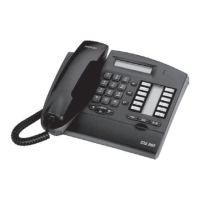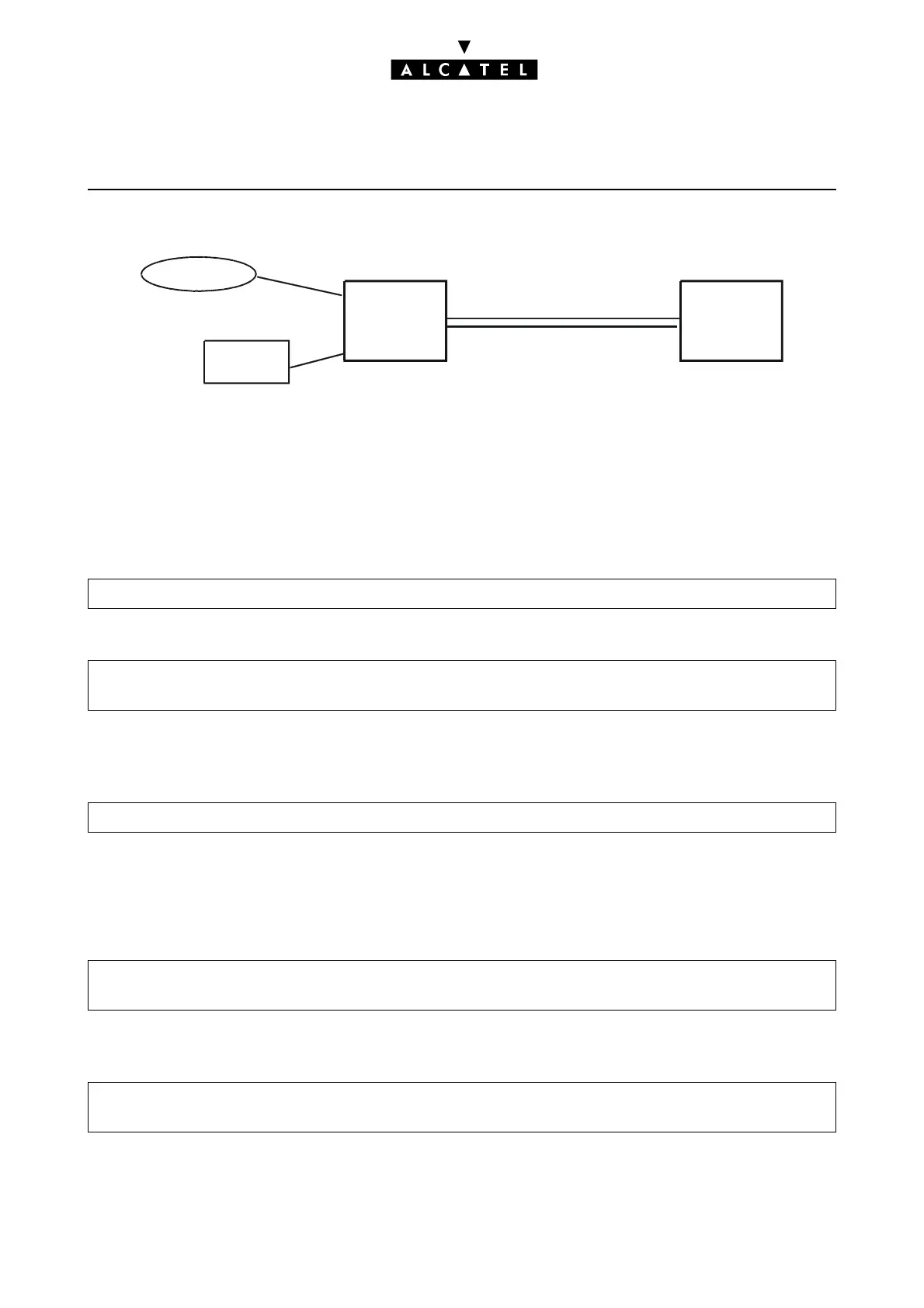THE NETWORK OFFERING CALL SERVER : PRIVATE NETWORKS
Ed. 0414/20 Réf. 3EH 21000 BSAA
Configuring a network with external lines on only one PABX
Only the ISDN external calls and the external communication transfers using these lines are taken into
account.
The dynamic forwarding feature is used on these subscribers; forwarding is carried out by a speed dial
number.
- program this new speed dial number in PABX 2 (N° 8000 for example) with the PABX 1 operator
as destination; the trunk group assigned to this speed dial number must be a logical direction for
optimization to be effective.
- program the PABX 2 subscribers supporting dynamic forwarding.
The external calls concern DDI direct calls (break-in).
If the called subscriber replies before time-out and wants to transfer a call to PABX 1, then Transfer
Ext/Ext must be authorized.
If the same subscriber transfers to a PABX 2 user, two options are offered in the event of no reply:
• the set keeps ringing
• the call goes to the Centralized Operator; when this happens, program dynamic forwarding on
the sets:
Disadvantage: local calls are also forwarded to the Centralized Operator.
- the operator's local calls (9) can also be transferred to the Centralized Operator:
Numbering -> Collective Speed Dial -> Add -> Trunk Group No = X
Subscribers/Basestations List -> Subscriber (select) -> Details -> Dyn. Rout. -> Timer T1 =
length of ring, External Calls level 1 = X in T1 use , Destination N° = 8000
System Miscellaneous -> Feature Design -> Add -> X to Transfer Ext/Ext
Subscribers/Basestations List -> Subscriber (select) -> Details -> Dyn. Rout. -> Timer T1 =
XX, Internal Calls level 1 = X in T1 use, Destination N° = 8000
Numbering -> Internal Numbering Plan -> Function = Secondary Trunk Group, Start and
End = 9, Base = 0, NMT = keep, Priv = yes
PABX 1
ISDN
PABX 2
Private T0
Centralized
operator

